|
| |
| |
6th International
System-on-Chip (SoC)
Conference, Exhibit &
Workshops
November 5 & 6, 2008
—
Radisson Hotel Newport Beach, Southern California
Several Opportunities to Win an
iPod shuffle, Technical Books & Many Unique Gifts Throughout the
Conference Program . . .
Don't Miss Out!
The Most Informative, Targeted, and Affordably
Priced
SoC, ASIC, ASSP, FPGA, and Foundry Technology Conference &
Exhibit Event of the Year!
|
|
|
Conference Program Abstracts &
Bios* |
| |
|
|
|
| |
8:00 -
8:15
Savant
Company Inc. |
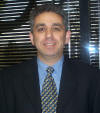 Farhad
Mafie, President and CEO of Savant Company Inc. Farhad
Mafie, President and CEO of Savant Company Inc.
"Welcome and Opening Remarks, Technology/Market Trends."
Farhad
has over 20
years of experience in semiconductor and computer businesses and more than 10
years of university-level teaching experience. Farhad is the former
Vice President of Marketing/Business Development and Technical Sales Engineering at
Toshiba America Electronic Components, Inc. He was responsible for marketing
the entire Toshiba standard ICs (RISC/CISC CPUs, Configurable CPUs, DSPs, Bluetooth,
Wireless ICs, RFID, MPEG-4, CCD/CMOS, Analog ICs, Automotive ICs, etc.).
He was also responsible for engineering development for Toshiba's Embedded and Digital Consumer
products & solutions based on ASSP and SoC Models.
Farhad established Toshiba's on-line
Tech-Support System as well as Toshiba's on-line System Solution Selling
methodologies for all Toshiba's products in the North American markets.
These on-line systems were adopted by Toshiba on a worldwide basis. He
also developed Toshiba's ASSP Business Unit and Technical Sales Engineering
Team as two brand new organizations for the company. Farhad has also worked at Lucent Technologies
on marketing communications ICs,
Toshiba Information Systems on product definition for Toshiba's notebooks
and handheld products, Unisys on designing new processors and computer
systems, and MSI Data on
designing data collection products. He has a Master of Science and a
Bachelor of Science degree in Electronic Engineering from California State
University, Fullerton. His combined business and academic experience
has given Farhad a unique ability to effectively communicate complex new
technologies to business professionals at all levels, as well as the ability
to foresee emerging leading-edge technologies.
Farhad is an author and a
translator, and he writes articles for a variety of journals and Web-based
magazines on technology and political affairs.
|
|
| |
8:15 am - 12:00 am |
New
Trends, Technologies, Methodologies, and Products for Your Next Chip Design
Track
Chairman: Farhad Mafie. |
|
| |
8:15 - 8:45
Austria Microsystems AG |
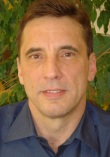
Philip
Cacharelis, Engineering Director - Full Service Foundry SBU. Austria Microsystems AG.
"SOC - Technology Perspective, Evolution and Challenges."
Abstract: From the perspective of the process technologist, a SOC design
is a circuit which merges the diverse functionality of multiple chips found,
perhaps on a single PCB, into a single product. The PCB might be considered
“the system”, hence the product would represent a “system on a chip”.
Integrating a digital core (DSP or micro-processor) with precision analog
circuits, program code and data storage as well as power handling/management
elements can represent such an SOC design. This is often accomplished on
silicon through the use of advanced Smart Power or BCD (Bipolar-CMOS-DMOS)
technology which allows the integration of CMOS, Bipolar, and power devices
as well as non-volatile memory and integrated passives such as capacitors
and inductors. These technologies have been published extensively at various
conferences and within technical journals and are most often used in the
design of Automotive products. While the potential of these technologies and
the sited product benefits of reduced cost, size, weight and improved
reliability have been highlighted, the actual product usage of these
technologies involves many circuit and device trade-offs and strong
commercial considerations. Other factors in the potential productization of
highly integrated technology are increasing digital content, ever-higher
memory density requirements and the consideration between distributed and
centralized intelligence in the applicable systems.
Bio: Philip Cacharelis has over 20 years experience in a wide range of
process technology development areas including CMOS, BiCMOS, embedded
non-volatile memory, Smart Power and LCOS microdisplay technology.
Currently, he is the Director of Engineering for the Full Service Foundry
Business Unit of austriamicrosystems. In this role, he is responsible for
the engineering activities within the business unit as well as for the
development of corporate ESD/EMC solutions. Prior to this, he served as
Technology Manager for Smart Power and Non-volatile Memory Technology at AMI
Semiconductor. Here he directed three groups in the technology development
of BCD, Embedded Non-volatile Memory and Advanced Device technologies. He
was employed by National Semiconductor Corp. (Santa Clara, Ca.) for 14 years
in technical management positions for the development of Smart Power and
embedded non-volatile memory technology. While at National, he also lead a
team in the development of a novel liquid-crystal-on-silicon (LCOS)
microdisplay technology used in rear projection televisions systems. His
interest in SOC stems from the multi-function circuit design capabilities
enabled by so-called fully-loaded, up-integrated Smart Power technologies.
He received a Bachelor of Science degree in Electrical Engineering from the
University of Illinois, has published 16 technical articles and holds 10
patents.
|
|
| |
8:45 - 9:15
Silicon & Software Systems
(S3) |

Mark
Barry, Technology Innovation Manager, Silicon & Software Systems (S3).
"Advanced Power Management Techniques."
Abstract: Green products and government directives are the key driving
forces behind the development of power-aware designs across the board, from
portable battery power devices to mains powered applications. Advanced power
management techniques such as voltage islands and voltage gating can reduce
power consumption but present significant challenges to the designer in
terms of design methodologies and voltage regulation to the IC. This
presentation will discuss the impact of advanced power management on aspects
of the design flow such as architecture, verification and physical design
and will include references to case studies showing how to avoid the common
pitfalls. The talk will also analyze the challenges involved in integrating
voltage regulators into deep-submicron SoCs in order to provide the lowest
overall bill-of-materials cost for consumer applications.
Bio: Mr. Mark Barry, Technology Innovation Manager, Silicon & Software
Systems (S3). Speaker Bio: Mr. Barry joined S3 in 2003 and is responsible
for the incubation of new silicon product and services ideas within the
business and the management of S3’s Mixed-Signal Power Management IP
Portfolio. Prior to S3 he was the Principal Architect with Bell Labs
Wireless Advanced Technology Group and a Department Head with NewLogic
Technologies. He is a senior member of the IEEE and has served on the
steering and review committee of several conferences such as ISCAS. He is
principal inventor of 4 US patents and represents S3 on the Irish
Microelectronic Industry Design Association.
|
|
| |
9:15 - 9:45
iSuppli |

Jordan Selburn,
Principal Analyst, Core Silicon, iSuppli Corp
Bio:
Jordan came to iSuppli with decades of extensive experience in ASIC,
programmable logic and semiconductor intellectual property (IP) analysis,
product marketing, and engineering development. Prior to joining iSuppli,
Jordan served as the Director of Product Marketing for Amphion
Semiconductor, where he was tasked with managing the technical product
marketing team. He launched products in all of Amphion’s product families in
addition to providing in-depth sales support for the products and the IP
business model. Prior to his tenure with Amphion, Jordan was the Principal
Analyst for ASIC and IP at Gartner Group/Dataquest and as such was
responsible for the evaluation and analysis of semiconductor IP as well as
the ASIC and programmable logic markets. He formulated and presented
tracking and forecasting on technology and market trends with particular
emphasis on system-level integration as part of his duties at Gartner
Group/Dataquest. Marketing Manager and Product Line Manager positions
at LSI Logic preceded his employment at Gartner Group/Dataquest. At LSI
Logic, Jordan was charged with establishing product positioning and pricing
for their production ASIC products. In addition, he generated technical
requirements and provided marketing direction to product development teams
along with creating business plans for 0.6 micron and 0.35 micron
technologies. Before LSI Logic, Jordan was an ASIC Technology Manager and a
Corporate Applications Engineer at Valid Logic Systems/Cadence Design
Systems and was also associated with Agilent/EEsof, Inc., and Harris
Corporation in various engineering capacities. Jordan holds a Master of
Science in Engineering Economic Systems from Stanford University in addition
to an MBA with distinction from Santa Clara University and a BSEE with
honors from the University of Michigan.
|
|
| |
9:45 - 10:00
Morning Break
|
Morning Break |
|
| |
10:0- 10:30
Keynote
University of Pennsylvania |
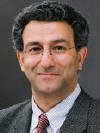
Dr. Nader Engheta, H. Nedwill Ramsey Professor of
Electrical and Systems Engineering, and Professor of Bioengineering.
University of Pennsylvania
"Circuits with Light at the
Nanoscale."
Abstract:
Imagine circuit elements so small that you could fit many of them in a cell!
What could you do with such optical nanocircuits? Would you be able to use
them in wireless gadgets at nanoscales, like a “nanoradio”, that may connect
our nanoworlds? Could these tiny optical nanocircuits be coupled with
biological entities? The fields of metamaterials and plasmonic optics may
provide road maps for such futuristic nanocircuits and wireless nanosystems.
We have been developing and investigating some of the fundamental concepts
and key features of metaplasmonic structures, devices, and circuits. These
components may be envisioned as a tapestry of nanostructures of sizes much
smaller than the wavelengths of light. This field, for which we have coined
the term metactronics, addresses metamaterial-inspired optical nanocircuits
and systems (N. Engheta, Science, 317, 1698-1702, 2007). . In my group, a
variety of ideas for nanocircuit functions, optical antennas for beam
shaping and photonic wireless at the nanoscale, optical nanoscopy,
nanospectrometer for molecular spectroscopy, cloaking of particles,
nanotagging and barcodes based on these optical circuits are being studied.
In this talk, I will give an overview of these studies, present insights
into these findings, and forecast future ideas and road maps in these areas.
Bio: Nader Engheta is the H. Nedwill Ramsey Professor of Electrical
and Systems Engineering, and Professor of Bioengineering, at the University
of Pennsylvania. He received his B.S. degree in EE from the University of
Tehran, and his M.S and Ph.D. degrees in EE from Caltech. Selected as one of
the Scientific American Magazine 50 Leaders in Science and Technology in
2006 for developing the concept of optical lumped nanocircuits, he is a
Guggenheim Fellow, an IEEE Third Millennium Medalist, IEEE Fellow, Optical
Society of America Fellow, and the recipient of the 2008 George H. Heilmeier
Award for Excellence in Research from UPenn, the Fulbright Naples Chair
Award, NSF Presidential Young Investigator award, the UPS Foundation
Distinguished Educator term Chair, and several teaching awards including the
Christian F. and Mary R. Lindback Foundation Award and S. Reid Warren, Jr.
Award. His current research activities span a broad range of areas including
metamaterials and plasmonics, nanooptics and nanophotonics,
biologically-inspired sensing and imaging, miniaturized antennas and
nanoantennas, physics and reverse-engineering of polarization vision in
nature, mathematics of fractional operators, and physics of fields and waves
phenomena. He has given numerous keynote, invited, and plenary talks on
these topics. He has co-edited the book entitled “Metamaterials: Physics and
Engineering Explorations” by Wiley-IEEE Press, 2006.
|
|
| |
10:30- 11:00
Altera |

Dr. Mojy Chian, Vice President of Technology
Development
Altera Corporation
"FPGAs at the 40nm process node and beyond."
Abstract:
As semiconductor process geometries advance to 45-nanometer and below, we
face significant development challenges both from a technical and business
perspective. Factors such as power efficiency and cost of development have
increased in significance with each new process generation and are now
dominant concerns for design teams. When the required R&D costs for each new
process generation are at least 50% higher (i.e. mask costs at 45-nm are
over $3M), the focus must be on first silicon to production. To keep
development costs down, solving these technical issues can be overcome by
using the “comprehend, model and predict” methodology. This in turn will
accomplish the goal of realizing a return on R&D investment, meeting time to
market requirements, and future-proofing devices, which allows changes to be
made later. This forces an ever-increasing number of applications to migrate
to from ASIC to FPGA-based designs. Additionally, experiences with 45-nm
design shows how techniques such as expanded statistical simulation and
methodical testing in silicon throughout the design process are helping
developers achieve first-time success in their designs. From a technical
perspective new design approaches and techniques are needed to address these
design challenges. These key technical challenges include lower voltage
headroom, increased process variability, leakage control, ESD, strain
induced proximity effect, temperature inversion, and speed to power
conversion. How these challenges are being addressed is the key. By closely
collaborating with a foundry partner design/process challenges, significant
value can be extracted from advanced process technologies. These challenges
include sophisticated device modeling that consider all deep sub-micron and
proximity effects, statistical simulation and modeling tools to isolate and
predict local and global variability, controlling leakage through multiple
gate oxide transistors, selective Vt adjustments, and selective channel
length adjustments.
Bio: Mojy Chian is vice president of technology development at Altera
Corporation. Before joining Altera, he was senior vice president of
high-performance analog engineering at Mindspeed Technologies. While there,
he was responsible for all aspects of IC product development, as well as
leading the core technology group from 2000 to 2004. Prior to this, he was
vice president of design automation and IP infrastructure for Conexant
Systems, worked at Rockwell Semiconductor Systems, and spent ten years at
Harris Semiconductor (later Intersil), leaving as the director of design
systems. Mr. Chian received his BS, MS, and PhD in Electrical Engineering as
well as an MS in Applied Math from Florida Tech. He holds two US patents,
has authored or co-authored over 30 technical publications, and has served
as adjunct professor at Florida Tech.
|
|
| |
11:00 -
11:30
Mentor
Graphics |
 Glenn
Perry, General Manager - Mentor Graphics ESL and Design Creation Division. Glenn
Perry, General Manager - Mentor Graphics ESL and Design Creation Division.
"A ROI
Model for Electronic System Level (ESL) Methodology."
Abstract: Electronic
System Level (ESL) design has enjoyed a history of success in the area of
system analysis and virtual prototyping by SoC architects and software
developers who needed early access to hardware. While this resulted in
significant design optimization and shorter time-to-market benefits, the
investment costs--primarily modeling--are significant and provide limited
value to the existing register transfer level (RTL) design community, who
struggle to implent and verify their latest designs. Today, models are the
currency that dictate ROI on this revolutionary ESL methodology. However,
these models, written at a level of abstraction above RTL, are scarce and
creating them is not trivial. A collaborative approach to models and ESL
methodology need to be deployed to reduce overall costs and design
efficiencies. This 30-minute keynote, ideal for engineering management and
their staff, will outline key strategies and available technologies,
including synthesis and verification, that will enable the design community
to drastically improve the ROI for an ESL design methodology.
Bio: Glenn Perry has
served as the General Manager of the ESL-HDL Design Business Unit at Mentor
Graphics since 2004. He joined Mentor in 1999 as the engineering director
for system level simulation tools, bringing over 20 years of experience in
the electronics industry, focused in the simulation and analysis of Systems
and IC Design. Prior to Mentor, Perry held engineering and management
positions at Analogy(now Synopsis), Harris Semiconductor, Sandia National
Laboratories and the United States Air Force Weapons Laboratory. Perry
studied electrical engineering in the USAF and University of New Mexico.
|
|
| |
11:30
- 12:00
Jazz Semiconductor |
 Dr.
Samir Chaudhry, Manager - Modeling & Characterization, Jazz Semiconductor. Dr.
Samir Chaudhry, Manager - Modeling & Characterization, Jazz Semiconductor.
"Process Technology Platforms for Analog Intensive Mixed-Signal (AIMS)
SoCs."
Abstract: From an AIMS foundry perspective, a dedicated
understanding of evolving customer needs is an important factor in
determining process technology and design enablement roadmaps. Emerging
requirements for process technology platforms to enable low-cost, fast
time-to-market, and feature rich AIMS SOCs are discussed. On the
technology side low-cost, high-performance and modular offerings are
critical in enabling successful SOCs. With a goal of reducing
time-to-market and prototyping costs, best-in-class design automation
tools are imperative. Design enablement tools, including silicon verified
device models and flexible design environments, allow customers to test,
modify and improve the functionality and yield of new products on the
computer long before the first prototype is manufactured. Trade-offs
between SOCs and SIPs (Systems In a Package) are discussed within the
context of AIMS systems.
Bio: Dr. Samir Chaudhry leads the modeling activities for Jazz
Semiconductor. His research interests include RF CMOS and statistical
modeling. He is intimately associated with the Compact Modeling Council in
developing industry standard compact models for circuit simulation. Prior
to joining Jazz Semiconductor, he was a Distinguished Member of Technical
Staff with Bell Labs, where he worked on Technology CAD and device
modeling for scaled silicon technologies. Dr. Chaudhry received his PhD in
Electrical Engineering from University of Florida. He has authored over 20
publications in peer-reviewed journals and conferences and has 14 patents
in the field of silicon technology.
|
|
| |
11:30 - 12:00
Lunch |
Lunch |
|
| |
|
Hardware
and Software Challenges for Multicore SoCs in Leading-Edge Applications
Track
Chairman: TBD. |
|
| |
Panel |
Panel:
““Hardware and Software Challenges for Multicore SoCs in Leading-Edge
Applications”
|
|
| |
1:00
- 2:00
EDN
Tensilica
eSilicon
Texas Instruments
AMD
Mentor Graphics
LogicVision
|

Robert Cravotta, Technical Editor, Microprocessors, DSPs, Software, and
Tools, EDN Worldwide.
Moderator
Bio: Robert Cravotta
currently covers embedded processors, such as microprocessors,
microcontrollers, and DSPs, as well as related tools for EDN's audience,
providing the latest in technical insight, product updates, and
architectural discussions in this vital industry area. Prior to EDN, he work
at Boeing and Rockwell where he worked on the control systems for a range of
projects including autonomous vehicles and power management for aircraft and
the space station. In addition to a BSCSE from UCLA's School of Engineering
and Applied Science, Robert has a MS in Engineering Management from
California State University (Northridge).
1:
Steve Leibson, Technology Evangelist.
2: Jack Harding, Chairman,
President and CEO.
3: Peter Ehlig, P.E., Fellow DSP,
Semiconductor Group.
4: Dan Shimizu, AMD Fellow.
5: Glenn Perry, General Manager,
ESL and Design Creation Division.
6: James T. Healy, LogicVision,
Inc., President and Chief Executive Officer.
Opportunity to Win an iPod
shuffle During this Panel Discussion . . .
Don't Miss Out!
|
|
| |
|
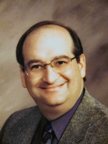 Steve
Leibson, Technology Evangelist, Tensilica Corporation. Steve
Leibson, Technology Evangelist, Tensilica Corporation.
Panelist
Bio: Steve Leibson is an experienced hardware and software design
engineer, engineering manager, and design consultant. He spent 10 years
working at electronic systems companies including HP’s Desktop Computer
Division, Auto-Trol Technology (graphics workstations), and Cadnetix (EDA
workstations) after earning his BSEE cum laude from Case Western Reserve
University. At HP, Auto-Trol, and Cadnetix, he specialized in the design of
desktop computers and workstations, especially in the areas of system and
I/O design. He then spent 15 years as an award-winning technology
journalist, publishing more than 200 articles in Microprocessor Report, EDN,
EE Times, Electronic News, and the Embedded Developers Journal. He served as
Editor in Chief of both EDN and the Microprocessor Report and was the
founding Editor in Chief of the Embedded Developers Journal. Leibson has
just written and published “Designing SOCs with Configured Cores,” a
treatise on 21st-century MPSOC design. Twenty years earlier, he wrote and
published “The Handbook of Microcomputer Interfacing,” which was published
in English, French, and Dutch, and was used as a university textbook for
many years. In 2004, he co-authored “Engineering the Complex SOC” with
Tensilica’s president and CEO Chris Rowen, which has also been used as a
textbook in university classes. He has also contributed chapters to several
other SOC design books since joining Tensilica in 2001.
|
|
| |
|
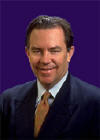 Jack Harding,
Chairman, President and CEO, eSilicon. Jack Harding,
Chairman, President and CEO, eSilicon.
Panelist
Bio: Jack Harding brings more than 20 years of executive management
experience in the electronics industry to eSilicon. Prior to co-founding
eSilicon, he served as president and CEO of Cadence Design Systems; during
his tenure, Cadence was the world's largest supplier of electronics design
software. Previously, Harding was president and CEO of Cooper & Chyan
Technology, which was acquired by Cadence in 1997. Harding also served as
Executive Vice President of Zycad Corporation. He began his career with
distinction at IBM.
Harding earned his bachelor's degree in Economics and Chemistry from Drew
University and has served as Vice Chairman of its Board of Trustees. He is a
Senior Fellow at the Institute for Development Strategies for the School of
Public and Environmental Affairs at Indiana University. Harding is a member
and former Steering Committee member of the Council on Competitiveness, a
Washington, D.C. based organization dedicated to the global competitiveness
of the U.S.; and a former National Academies' Committee member for Software,
Growth and the Future of the U.S. Economy. He is a frequent lecturer on
innovation and entrepreneurship, and has served on many boards of public and
private companies. He is a member of Board of Directors for RF Micro Devices
(RFMD). In 2007, the industry elected Mr. Harding to the Board of Directors
for the Global Semiconductor Alliance (GSA).
|
|
| |
|
 Peter Ehlig, P.E., Fellow DSP,
Semiconductor Group,
Texas Instruments. Peter Ehlig, P.E., Fellow DSP,
Semiconductor Group,
Texas Instruments.
Panelist
Bio: Peter has worked at Texas Instruments for over 30 years. In this
time he has worked in areas varying from operating systems to CPU
architecture definition to semiconductor material science. He has inventions
involving in Modems, Cell Phones, Hard Disk Drives, Automotive, and Military
applications. He believes SOC success involves at least a working
understanding of the end customer’s needs and interests all the way down to
the semiconductor physics of the device or devices.
|
|
| |
|
 Glenn
Perry, General Manager - Mentor Graphics ESL and Design Creation Division. Glenn
Perry, General Manager - Mentor Graphics ESL and Design Creation Division.
Panelist
Bio: Glenn Perry has served as the General Manager of the ESL-HDL
Design Business Unit at Mentor Graphics since 2004. He joined Mentor in 1999
as the engineering director for system level simulation tools, bringing over
20 years of experience in the electronics industry, focused in the
simulation and analysis of Systems and IC Design. Prior to Mentor, Perry
held engineering and management positions at Analogy(now Synopsis), Harris
Semiconductor, Sandia National Laboratories and the United States Air Force
Weapons Laboratory. Perry studied electrical engineering in the USAF and
University of New Mexico.
|
|
| |
|
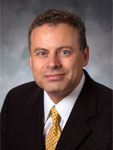 Dr.
Fadi Maamari, Chief Operating Officer, LogicVision. Dr.
Fadi Maamari, Chief Operating Officer, LogicVision.
Panelist
Bio: Fadi Maamari, Ph.D., Chief Operating Officer, has been with
LogicVision since 1996 and has helped develop several generations of its
embedded test technology. He has served as LogicVision’s Vice President of
Engineering since June 2006, and previously held senior management positions
in Engineering, Applications Engineering and Marketing. From 1990 to 1996,
Dr. Maamari was a Member of Technical Staff at AT&T Bell Labs’ Engineering
Research Center in Princeton, NJ, specializing in Computer-Aided
Design-For-Test of Integrated Circuits. He has a Ph.D. from McGill
University in Montreal, and M.S. and B.S. Engineering degrees from École
Polytechnique in Montreal, Canada.
|
|
| |
2:00 - 2:30
Keynote
Intel
|
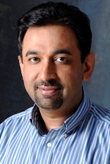 Pranav
Mehta, Sr. Principal Engineer and CTO, Embedded & Communications Group,
Intel. Pranav
Mehta, Sr. Principal Engineer and CTO, Embedded & Communications Group,
Intel.
Keynote
Abstract: Following the theme of the 2008 conference, “Innovation in
Chip Design,” Schooler will address how System-on-Chip (SoC) technology has
evolved from traditional, three-chip solutions and how SoCs eliminate design
barriers and increase performance for various compute platforms. Schooler
will also discuss power reduction and management techniques at the
architectural, design and physical levels for SoCs. The keynote will also
look at new usage models enabled by SoC designs and customer benefits, such
as decrease in time-to-market, ability to design products using the same
board and cost savings. Finally, Schooler will speak to design challenges
that led to the development of current SoC products and how these key
learnings can be applied as best practices in the engineering field.
Key take-aways for the audience include:
• Realize performance enhancements enabled by modern SoCs
• Understand design challenges that spurred SoC innovation
• Learn case study for SoC designs with scalability for more than one
application
• Gain insight into the future of SoC technology and potential applications
Bio: Pranav Mehta, Sr. Principal Engineer and CTO, Embedded &
Communications Group, Intel.
Pranav Mehta is a Sr. Principal Engineer and CTO for the Embedded &
Communications Group within Intel’s Digital Enterprise Group. His team
focuses on optimizing the Embedded Intel Architecture (IA) building blocks
for the Communications, Storage, and Embedded market segments. This involves
understanding performance bottlenecks in IA CPU and System architectures for
these application segments; developing solutions to remove those
bottlenecks; and modeling these solutions to ensure proper ROI before
incorporating them into IA silicon. He has led architecture development of
several embedded IA chipsets and SOCs.
|
|
| |
2:30 ‒
3:00
Tensilica |
 Steve
Leibson, Technology Evangelist, Tensilica Corporation. Steve
Leibson, Technology Evangelist, Tensilica Corporation.
"Convenient Concurrency Rules Multicore SOC Design."
Abstract: The former lords of multiprocessing in the supercomputing
realm call problems that are easily decomposed for distribution to multiple
processors “embarrassingly parallel,” as though you should be embarrassed
when you need not break your back to solve a problem. Well-known problems
such as graphics and network packet processing exhibit this type of
parallelism. However, even embarrassingly parallel problems can require some
pretty elegant solutions. Fortunately, there’s a lot more parallelism around
than is implied in the term “embarrassingly parallel.” In fact, my colleague
Grant Martin, Tensilica’s Chief Scientist, coined a new term to describe
this situation: “conveniently concurrent.” Conveniently concurrent problems
surround us. Even problems formerly considered embarrassingly parallel are
conveniently concurrent. Many SOCs destined for high-volume consumer
products exhibit plenty of convenient concurrency. Intel and AMD are both
pushing multicore processors in the PC space these days. They must because
the clock-rate wars have ended due to excessive power dissipation. The same
is happening in the world of SOC design. In the PC space, all of the old
rules from supercomputing days are seeping in and people are searching for
compilers that will decompose big problems into processor-sized chunks. We
are much more fortunate in the embedded world. Abundant concurrency is
arranged so that the problem naturally decomposes into several
processor-sized chunks. This talk will discuss just how conveniently
convenient this situation is and how these factors influence multicore SOC
design.
Bio: Steve Leibson is an experienced hardware and software design
engineer, engineering manager, and design consultant. He spent 10 years
working at electronic systems companies including HP’s Desktop Computer
Division, Auto-Trol Technology (graphics workstations), and Cadnetix (EDA
workstations) after earning his BSEE cum laude from Case Western Reserve
University. At HP, Auto-Trol, and Cadnetix, he specialized in the design of
desktop computers and workstations, especially in the areas of system and
I/O design. He then spent 15 years as an award-winning technology
journalist, publishing more than 200 articles in Microprocessor Report, EDN,
EE Times, Electronic News, and the Embedded Developers Journal. He served as
Editor in Chief of both EDN and the Microprocessor Report and was the
founding Editor in Chief of the Embedded Developers Journal. Leibson has
just written and published “Designing SOCs with Configured Cores,” a
treatise on 21st-century MPSOC design. Twenty years earlier, he wrote and
published “The Handbook of Microcomputer Interfacing,” which was published
in English, French, and Dutch, and was used as a university textbook for
many years. In 2004, he co-authored “Engineering the Complex SOC” with
Tensilica’s president and CEO Chris Rowen, which has also been used as a
textbook in university classes. He has also contributed chapters to several
other SOC design books since joining Tensilica in 2001.
|
|
| |
3:00 ‒ 3:30
Toshiba |
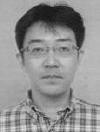
Hideki
Takeda, Senior Specialist, Center for Semiconductor Research & Development
Semiconductor Company Toshiba Corporation.
"Venezia, a New Scalable Multicore
Processor for Mobile Multimedia Applications."
Abstract: Toshiba will introduce a
new scalable multi-core processor, Venezia, for the mobile multimedia
systems. Venezia is organized by small and low-power processors that are
configured by Toshiba’s configurable processor MeP (Media embedded
Processor). By changing number of processors and size of caches, it can
cover a broad range of applications from low-end to high-end. Furthermore,
Venezia’s software platform enables the binary level software compatibility
and performance scalability among variety of designs based on Venezia
architecture by exploiting coarse-grain thread level parallelism.
Bio:
Hideki Takeda received the B.S. degree in Electrical Engineering
and M.S. degree in Electronic Engineering from the University of
Tokyo, Tokyo, Japan in 1992, 1994, respectively. In 1994, he
joined Toshiba Corporation, where he has been engaged in the
development of MPEG-2/H.264 decoder LSIs, media processors. He is
currently involved in the development of video codec LSI for mobile
multimedia system. |
|
| |
3:30 ‒
4:00
National Taiwan University |
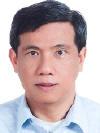 Professor
Sao-Jie Chen, National Taiwan University Professor
Sao-Jie Chen, National Taiwan University
"DESIGN OF A VLIW/SMT/DUAL-CORE SWP-SIMD
PLX2 PROCESSOR."
Abstract: In embedded multimedia
systems, increasing operations per cycle and reducing clock frequency in a
design are the key concepts to reduce its energy consumption. Subword-parallel
Single-Instruction Multiple-Data (SWP-SIMD) processor provides a low-cost
high-performance solution for multimedia applications. But there still exist
some critical sequential algorithms that could not be improved by SWP-SIMD.
Using VLIW to increase Instruction-Level parallelism (ILP) or simultaneous
multi-threading (SMT) to hide memory latency is useful for these algorithms.
Our newly designed 64-bit SWP-SIMD core can be partitioned into two 32-bit
scalar ALUs, working as a two-issue VLIW core or a dual-core. This
multi-mode parallelization capability allows more performance improvement
with little hardware cost increase.
Bio: Sao-Jie Chen received the B.S. and M.S. degrees in electrical
engineering from the National Taiwan University, Taipei, Taiwan, ROC, in
1977 and 1982 respectively, and the Ph.D. degree in electrical engineering
from the Southern Methodist University, Dallas, USA, in 1988. Since 1982, he
has been a member of the faculty in the Department of Electrical
Engineering, National Taiwan University, where he is currently a full
professor. During the fall of 1999, he was a visiting professor in the
Department of Computer Science and Engineering, University of California,
San Diego, USA. During the fall of 2003, he held an academic visitor
position in the Department of System Level Design, IBM Thomas J. Watson
Research Center, Yorktown Heights, New York, USA. During the falls of 2004,
2005, 2006, and 2007, he was a visiting professor in the Department of
Electrical and Computer Engineering, University of Wisconsin, Madison, USA.
His current research interests include: VLSI physical design, SOC
hardware/software co-design, and Wireless LAN and Bluetooth IC design. Dr.
Chen is a member of the Chinese Institute of Engineers, the Chinese
Institute of Electrical Engineering, the Institute of Taiwanese IC Design,
the Association for Computing Machinery, a senior member of the IEEE
Circuits and Systems and the IEEE Computer Societies.
|
|
| |
4:00 -
4:15
Afternoon
Break |
Afternoon Break |
|
| |
4:15 - 4:45
UCI |
 Dr.
Nader Bagherzadeh,
University of
California, Irvine. Dr.
Nader Bagherzadeh,
University of
California, Irvine.
"General Purpose Processors (GP) vs.
Application Specific Processors (ASP), what is the future for multicore
designs with 1000's of IPs?"
Abstract: In this talk first a
brief overview of multicore architectures is discussed. Next, the critical
issue of homogeneous versus heterogeneous processing nodes for the future
multicore architectures is analyzed, and areas that require further research
and development are identified. Finally. concluding remarks are made
regarding future designs.
Bio: Dr. Nader
Bagherzadeh has been involved in research and development in the areas of
computer architecture, reconfigurable computing, VLSI chip design, and
computer graphics. For almost ten years ago, he was the first researcher
working on the VLSI design of a Very Long Instruction Word (VLIW) processor.
Since then, he has been working on multithreaded superscalars and their
application to signal processing and general purpose computing. His
current project at UC, Irvine is concerned with the design of coarse grain
reconfigurable pixel processors for video applications. The proposed
architecture, called MorphoSys, is versatile enough to be used for digital
signal processing tasks such as the ones encountered in wireless
communications and sonar processing. DARPA and NSF fund the MorphoSys
project (total support $1.5 million). Dr. Bagherzadeh was the Chair of
Department of Electrical and Computer Engineering in the Henry Samueli
School of Engineering at University of California, Irvine. Before
joining UC, Irvine, from 1979 to 1984, he was a member of the technical
staff (MTS) at AT&T Bell Laboratories, developing the hardware and software
components of the next-generation digital switching systems (#5 ESS).
Dr. Bagherzadeh holds a Ph.D. in computer engineering from The University of
Texas at Austin. As a Professor, he has published more than a hundred
articles in peer-reviewed journals and conference papers in areas such as
advanced computer architecture, system software techniques, and high
performance algorithms. He has trained hundreds of students who have
assumed key positions in software and computer systems design companies in
the past twelve years. He has been a Principal Investigator (PI) or
Co-PI on more than $2.5 million worth of research grants for developing
next-generation computer systems for solving computationally intensive
applications related to signal and image processing.
|
|
| |
4:45 ‒
5:15
MIPS
Technologies |
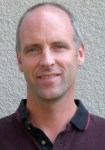
Darren Jones, Engineering Director,
Microprocessor Development
MIPS Technologies, Inc.
"Boosting
System Performance with Multithreaded Multiprocessing."
Abstract: Today’s SMP operating
systems and coherent multi-core platforms offer developers a performance
migration roadmap under one OS and the potential to make better use of
system resources—maximizing SoC performance on mainstream silicon processes
and clock speeds. Adding multithreading on top of a coherent multi-core
architecture extracts even more performance by optimizing pipeline
utilization in each CPU for minimal additional silicon cost. The performance
boost comes essentially for “free” in both hardware and software, since the
additional hardware threads are minimal in size relative to a typical SoC
design, and multithreading uses the same SMP OS and software programming
models as coherent multi-core platforms. In some applications,
multithreading can reduce the need for additional processors, or may help
achieve an application performance target at lower frequency and/or a
smaller synthesized design. This presentation will discuss real-world
applications of MIPS Technologies’ MIPS32® 1004K™ coherent processing
system—the industry’s first embedded multithreaded, multiprocessor
licensable IP core—including the latest performance benchmarking data.
Bio: As Engineering Director, Microprocessor Development, Darren
Jones is responsible for the logic design of MIPS Technologies’ 32-bit
processor core families including the high-performance 24K and 24KE cores,
multi-threaded 34K cores and multi-threaded multiprocessing 1004K cores.
Darren joined MIPS Technologies in 1998 from LSI Logic, where he held the
position of Engineering Manager. During his tenure at MIPS Technologies and
LSI, he has worked on ten different cores, always using an
ASIC-style/reusable IP methodology. Darren graduated from the
University of Illinois in 1989 with a BSEE, and received his MSEE from
Stanford University in 1990.
|
|
| |
5:15 - 5:45
ST
Microelectronics |
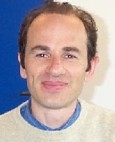 Antonio-Marcello
Coppola, Head of the Grenoble Research Laboratory, ST Microelectronics. Antonio-Marcello
Coppola, Head of the Grenoble Research Laboratory, ST Microelectronics.
"Is the "true NoC"
just an urban engineering legend?"
Abstract: Recently, most major PC industries as well as embedded
devices are shifting to multiple cores (Multicore) on a single chip to
improve processor performance. This presentation will discuss the evolution
of Multicore for mobile consumer applications from a different angle. It
will show the importance that an on-chip communication network is playing
during this evolution and trying to see if future Multicore architectures
will include or not a true NoC.
Bio: Marcello Coppola is working for STmicroelectronics, he is Head
of the Grenoble Research Laboratory within “Advanced System Technology”, a
corporate research organization in ST. He studied computer science at Pisa
University. In 1992, he received his Laurea degree and started working at
the Transputer architecture group of INMOS, Bristol (UK). For 2 and half
years he worked on a research program regarding the architecture of the C104
router.
His research interests include several aspects of design technologies for
System on Chip, with particular emphasis to Network on Chip, MPSoC
architecture, Programming Modeling and system level design. His publication
record covers publications in the filed of simulation, modeling, SoC
architecture and on-chip communication network. He wrote chapters for
different books. He was one the members for the OSCI language working group.
He contributed to SystemC2.0 language definition and OSCI standardization.
He has chaired international conferences on SoC design and helped to
organize several others. He is program committee member of DATE, FDL,
CODES+ISSS, DAC. He is cited in Marquis “Who’s Who in Engineering” and IBC
biographies.
|
|
| |
4:30 pm -
8:30 pm
Exhibit |
Conference Exhibit & Reception Open
|
|
| |
|
|
|
| |
|
|
|
| |
8:00 -
8:15 |
 Farhad
Mafie, President and CEO of Savant Company Inc. Farhad
Mafie, President and CEO of Savant Company Inc.
"Welcome and Opening Remarks, Technology/Market Trends."
Farhad
has over 20
years of experience in semiconductor and computer businesses and more than 10
years of university-level teaching experience. Farhad is the former
Vice President of Marketing/Business Development and Technical Sales Engineering at
Toshiba America Electronic Components, Inc. He was responsible for marketing
the entire Toshiba standard ICs (RISC/CISC CPUs, Configurable CPUs, DSPs, Bluetooth,
Wireless ICs, RFID, MPEG-4, CCD/CMOS, Analog ICs, Automotive ICs, etc.).
He was also responsible for engineering development for Toshiba's Embedded and Digital Consumer
products & solutions based on ASSP and SoC Models.
Farhad established Toshiba's on-line
Tech-Support System as well as Toshiba's on-line System Solution Selling
methodologies for all Toshiba's products in the North American markets.
These on-line systems were adopted by Toshiba on a worldwide basis. He
also developed Toshiba's ASSP Business Unit and Technical Sales Engineering
Team as two brand new organizations for the company. Farhad has also worked at Lucent Technologies
on marketing communications ICs,
Toshiba Information Systems on product definition for Toshiba's notebooks
and handheld products, Unisys on designing new processors and computer
systems, and MSI Data on
designing data collection products. He has a Master of Science and a
Bachelor of Science degree in Electronic Engineering from California State
University, Fullerton. His combined business and academic experience
has given Farhad a unique ability to effectively communicate complex new
technologies to business professionals at all levels, as well as the ability
to foresee emerging leading-edge technologies.
Farhad is an author and a
translator, and he writes articles for a variety of journals and Web-based
magazines on technology and political affairs.
|
|
| |
8:15 am - 12:00 am |
Innovative
Embedded Memory Solutions for Complex Multicore SoCs
Track
Chairman:
Dr.
Nader Bagherzadeh,
University of
California, Irvine.
|
|
| |
8:15 - 8:45
GENUSION |
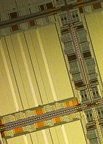 Moriyoshi
Nakashima, President, GENUSION. Moriyoshi
Nakashima, President, GENUSION.
"NVM Technologies - B4-Flash with its Embedded Application and eCFlash
(Logic NVM IP)"
Abstract: In the recent non-volatile memory (NVM) arena, NVM
technology has been expanding the applications of data storage with NAND
Flash. On the other hand other types of NVM applications have been generated
in SoC, MCU and all kind of LSI devices by embedded NVM technologies for
built-in program storage, security or tuning data. In consequence, many
types of memory technologies have been proposed to meet with and to be
optimized for individual customer requirements regarding application, cost,
density, performance, and so on. It seems to be diverging of NVM
technologies in the embedded NVM arena. GENUSION proposes a novel NVM
technology “B4-Flash” for code storage which achieves higher performance and
reliability with lower cost in comparison with conventional NOR. We propose
the embedded NVM IP portfolio to apply wide range of customer requirements
with our embedded NVM technology platform of B4-Flash and another GENUSION
proprietary NVM of eCFlash as logic NVM.
Bio: Moriyoshi Nakashima joined Mitsubishi Electric Corporation in
1981. He had been in charge of non-volatile memory process integration and
technology development including embedded NVM applications until 1998. He
became the manager of flash memory business unit in 1998 to start memory
solution and multi chip package (MCP) business for mobile phones leading to
one billion US dollar business and world biggest MCP share in the
application. He quitted Mitsubishi in 2002 and founded GENUSION. He is a
president of GENUSION, Inc. developing novel NVM technologies.
|
|
| |
8:45 - 9:15
Kilopass Technology |
 Charles
Ng, VP of Worldwide Sales & Marketing, Kilopass Technology Inc. Charles
Ng, VP of Worldwide Sales & Marketing, Kilopass Technology Inc.
"Demystifying Logic NVM Options."
CMOS Logic NVM IP solutions each have advantages and disadvantages that
hinge on their respective underlying technologies. In this presentation, an
introduction will be made for the three types of Logic NVM technologies in
production today: fuse, antifuse, and floating gate. Each technology will be
described in terms of its capabilities as an embedded NVM technology. Based
on each technology analysis will also be provided regarding process trends
and the future of CMOS Logic NVM for SoC applications.
Bio: TBD.
|
|
| |
9:15 - 9:45
Micron |
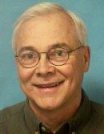 Jim
Cooke, Staff Architect and Technologist, NAND Flash. Micron Technology. Jim
Cooke, Staff Architect and Technologist, NAND Flash. Micron Technology.
"Achieving the Need for Speed in Flash Based Designs."
Abstract: Data rates for many next generation flash interfaces,
like USB 3.0, C-Fast and others, will exceed 300MB/s, but today’s flash
interfaces typically support only 10 to 40MB/s. Traditional techniques to
achieve higher performance, like wider data busses, are not always an
option and can cause density issues. This presentation will discuss
new NAND flash standards and devices that will support increased data
rates. In addition, we will discuss migration paths and backwards
compatibility with traditional NAND flash interfaces. We will include
specifics of the interface, signal integrity and implementation details
that will provide designers with all the tools that are needed to
implement high performance systems. We will also discuss Flash technology
trends and the future challenges in 32nm and beyond.
Bio: Jim Cooke is a Staff Architect for Micron’s architecture
development group. He has a BSEE from the University of
Massachusetts. Previously, he was responsible for managing the
applications engineering group and hardware engineering team for Toshiba
America Electronic Components. In addition, Jim has over 20 years of
hands-on systems-level design experience in embedded applications and
digital consumer markets.
|
|
| |
9:45 - 10:00
Morning Break
|
Morning Break |
|
| |
10:00 - 10:30
Keynote
Georgia Institute of Technology |
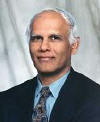 Professor
Rao R. Tummala, Director of Microsystems Packaging Research Center. Georgia
Institute of Technology. Professor
Rao R. Tummala, Director of Microsystems Packaging Research Center. Georgia
Institute of Technology.
"An All Silicon 3D Systems Technology, An Emerging and Disruptive Technology
for Convergence of IC, Package and System,"
Abstract: 3DASSM is an all Silicon System using Si for ICs,
components, packages and system boards using 3D technologies. It is an
ultra-miniaturized, ultra-functional, and low cost systems technology,
enabled by new designs, thin-film materials, large-area low-cost processes,
and heterogeneous functional integration leading to lower cost convergent
system products. Such a technology is presented as achieving better
electrical performance, ultra-miniaturization, greater heterogeneous
integration, higher thermal performance and higher thermo-mechanical
reliability at lower-than-today's organic-based hybrid packages and systems.
This technology is proposed as an R&D industry consortium in partnership
with Fraunhofer (Germany) and KAIST (Korea) and includes exploratory
interdisciplinary fundamental research in design and test, Si package
replacing organic package, low cost TSV and stack bonding, thin-film
embedded active and passive components, and system interconnections. In
addition, the consortium integrates the above fundamental research into
useful test vehicles to demonstrate the commercial feasibility of cost
effective 3D structures, silicon packages, and all silicon modules with
seamless integration of ICs with their FEOL and BEOL, as well as with
package wiring. More than 20 projects are proposed in these areas.
3DASSM differs from other 3D industry programs in a variety of ways, such
as:
1. 3DASSM starts with the current industry problem, the high cost and low
reliability of TSV and stack bonding. Here we propose several fundamental
research projects to address cost and reliability, such as new fabrication
methods for low cost and high density TSVs, new structures that improve the
rmomechanical reliability, novel low cost solder and adhesive stack bonding
methods. In addition, this research will culminate in a 3D stack bonding
test vehicle and a Si package test vehicle to demonstrate the improved
performance, reliability, and manufacturability of the technologies
developed.
2. 3DASSM goes beyond current 3D programs to demonstrate a double-sided
silicon package replacing the organic package enabled by low cost TSV in a
seamless integration. This test vehicle will address shortcomings of the
organic package such as wiring and I/Os, thermal performance, warpage and
cost.
3. 3DASSM leads to next generation of wafer level packaging. This is
referred to as Wafer System module in the 3DASSM. In this approach, ICs with
both FEOL and BEOL are integrated with seamless integration of package
wiring and cost effective thin embedded components on both sides of wafer
enabled by TSV
and 3D interconnections.
The ultimate goal is to design, demonstrate and commercialize a highly
integrated all silicon system module (ASSM). 3DASSM, therefore, is a global
Industry-Academia consortium on a global topic with potential to
become a disruptive and revolutionary silicon module technology in the near
term and a systems technology in the long term.
Bio:
r. Rao Tummala received the
BE degree in Metallurgical Engineering from the Indian Institute of Science,
Bangalore, India and the Ph.D. degree in Materials Science and
Engineering from the University of Illinois. He joined the faculty at
Georgia Tech in 1993 as a Pettit Chair Professor in Electronics Packaging
and as Georgia State Research Scholar. He is also the Director of the
Microelectronic Systems Electronic Packaging Research Center funded by NSF
as one of its Engineering Research Centers, the state of Georgia, and US
electronics industry. Prior to joining Georgia Tech, he was an IBM
Fellow at the IBM Corporation, where he invented a number of major
technologies for IBM's products for displaying, printing, magnetic storage
and multichip packaging for which he received 16 Technical,
Outstanding and Corporate Awards from IBM. He is both a fellow of IEEE and
the American Ceramic Society, a member of the National Academy of
Engineering, 1996 President of IMAPS and current
president of the IEEE-CPMT Society. He was recently named by Industry Week
as one of the 50 Stars in the US, for improving US competitiveness. He is
co-editor of four widely-used Microelectronics Packaging Handbooks. He
published 205 technical papers and holds 68 US patents and inventions. He
has received many awards: David Sarnoff, sustained technical achievement
award from IEEE, John Wagnon's award from IMAPS, Materials Engineering
achievements award from ASM-I, Distinguished Alumni Honor award from
University of Illinois and the Indian Institute of Science, and Arthur
Friedberg Memorial award and the John Jeppson Award from American Ceramic
Society, the Total Excellence in Electronics Manufacturing (TEEM) Award from
the Society of Manufacturing Engineers, and the European Materials Award
from DVM. He recently received the highest faculty award at Georgia Tech,
the Distinguished Faculty Award.
|
|
| |
10:30
- 11:00
Innovative Silicon |
 Jeff Mitchell, Director of
Technical Marketing, Innovative Silicon. Jeff Mitchell, Director of
Technical Marketing, Innovative Silicon.
"Z-RAM: A Better DRAM."
Abstract:
After nearly 40 years of evolution, the classical 1T/1C DRAM is finally
reaching its scaling limit. As a possible replacement technology,
Floating-Body Memory is getting increasing industry attention. Z-RAM is a
type of Floating-Body Memory which uses a novel method of reading and
writing to the memory cell utilizing the bipolar device intrinsic to the MOS
transistor. Taking advantage of this "bipolar operating mode" of a
Floating-Body Memory increases the operating margins of the memory cell.
This substantially improves its manufacturability and creates, for the first
time, a truly viable candidate for replacement of the 1T/1C DRAM.
Bio: Jeff Mitchell is Director of Technical Marketing at
Innovative Silicon. He has more than 20 years of experience in the
electronics industry and has been awarded several patents. He has had a
varied career, holding positions in engineering, marketing, and business
development. Mitchell has a B.S. in Engineering from Harvey Mudd College.
|
|
| |
11:00 - 11:30
Virage Logic |
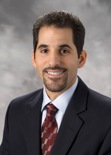 Luigi Ternullo, Product Marketing Manager, STAR Memory
System, Virage Logic Corporation Luigi Ternullo, Product Marketing Manager, STAR Memory
System, Virage Logic Corporation
"Using Data Traffic Efficiency Metrics to Select the
Best DDR Memory Controller for your Design."
Abstract: The use of DRAM has become a key architecture consideration
for many System-on-Chip (SoC) designs. Whether the DRAM is designed to be
on-chip (embedded DRAM), or an off-chip DRAM subsystem, the SoC will very
likely require an on-chip memory controller, and many times an IP-based
memory controller is used. Understanding how to select the best
IP-based memory controller for specific applications can be a complex task.
Some of the obvious criteria, such as performance, area, cost, power, and
latency all need to be factored in, however, using a data traffic
“efficiency” metric (bandwidth delivery/theoretical maximum bandwidth) has
proven to be the most important criteria for a wide range of applications.
This paper will describe the efficiency metric and will show measurements
for typical efficiency levels that can be achieved for different memory
controller architectures. This will make it easier to determine where in the
efficiency spectrum a particular memory controller design resides.
Additionally, we will use two examples from real systems (a networking
router and an image processor for a security application), to demonstrate
how efficiency can be used to make system tradeoffs that can result in
significant savings, lower system cost, lower power consumption, gain higher
system performance, and quicker time-to-market.
Bio: Luigi Ternullo serves as Product Marketing Manager for Virage
Logic’s Application Specific IP product solutions such as Double Data Rate
(DDR) memory controllers. Prior to joining Virage Logic in 2006, Ternullo
held technical marketing management positions and senior engineering
management positions at Agere, Vanguard International Semiconductor, and
IBM. His range of experience includes SRAM design, memory and logic built-in
self-test (MBIST and LBIST). Mr. Ternullo also holds over 25 patents in BIST
and memory design, and has authored several BIST papers. He holds a B.S. and
M.S. in Electrical Engineering from Rochester Institute of Technology, and
M.B.A. from Lehigh University.
|
|
| |
11:30 - 12:00
Novelics |
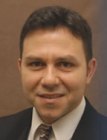 Esin
Terzioglu, Ph.D., Chief Technology Officer and Co-Founder, Novelics
Corporation. Esin
Terzioglu, Ph.D., Chief Technology Officer and Co-Founder, Novelics
Corporation.
"Innovative Embedded Memories."
Bio: Novelics
co-founder Esin Terzioglu serves as chief technology officer for the
company, overseeing technical strategy, hiring and organization. Dr.
Terzioglu is responsible for managing the engineering projects and
innovations for the company’s embedded memory technologies.Prior to
co-founding Novelics, Dr. Terzioglu held key technical positions at Broadcom
Corporation from 1999 to 2005, progressing from staff scientist to principal
scientist. He led the development of four generations of embedded SRAM
memory technology, contributing to industry-leading achievements in memory
area efficiency, power and speed.
Dr. Terzioglu has published 11 technical papers in the areas of fabrication
processes, device physics and superconducting electronics, and holds more
than 50 patents, mainly in circuit design and semiconductor memory
technologies.
Dr. Terzioglu received his bachelor’s of science in electrical engineering
from the University of Rochester, his master’s of science and his Ph.D. in
electrical engineering from Stanford University with a minor in computer
science.
|
|
| |
12:00 - 1:00
Lunch |
Lunch |
|
| |
1:00 - 2:00
Panel
|
Panel:
"Innovative Embedded
Memory Solutions for Complex Multicore SoCs”
|
|
| |
Chip Design
Tohoku
University
MOSAID
Crocus Technology
Novelics
ARM
KeyASIC
|
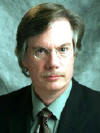
John E. Blyler, Editorial
Director Chip Design, Embedded Intel, Green Embedded and EE Catalog
magazines.
Moderator
John is the Editorial Director for Extensionmedia. He provides editorial
direction for Chip Design, Embedded Intel and Green Electronic System
print/online magazines, in addition to Trends reports. John was the senior
editor for Penton s Wireless Systems Design magazine and the IEEE I&M
magazine. John has co-authored several books on technology (Wiley and
Elsevier). He has over 23 years systems engineering hardware-software
experience in the electronics industry. John remains an affiliate professor
in Systems Engineering at Portland State University. Mr. Blyler holds a BS
in Engineering Physics from Oregon State University, as well as a MSEE from
California State University, Northridge. He maintains a blog at:
www.chipdesignmag.com/blyler
Panelists
1:
Dr. Mitsumasa Koyanagi, Distinguished Professor, Graduate School of Engineering, Dept., of Bioengineering and Robotics
Advanced Bio-Nano Devices Lab.
2: Dr. Dick Foss, Founder and
former Chairman of MOSAID.
3: Jean-Pierre Nozieres, Founder
and CTO.
4:
Dr. Cyrus Afghahi, CEO, Novelics.
5:
Dr. Robert C.
Aitken, Fellow, R&D.
6:
Alan Aronoff, Vice President of Business Development.
Opportunity to Win an iPod
shuffle During this Panel Discussion . . .
Don't Miss Out!
|
|
| |
|
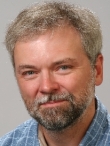 Dr. Robert C.
Aitken, Fellow, R&D, ARM Corporation. Dr. Robert C.
Aitken, Fellow, R&D, ARM Corporation.
Panelist
Bio: Robert C. Aitken
is an R&D Fellow at ARM. His areas of responsibility include library
architecture, low power design, and design for manufacturability. He has
given tutorials and short courses on several subjects at conferences and
universities worldwide. He has published over 50 technical papers, and holds
a Ph.D. degree from McGill University in Canada.
|
|
| |
|
 Dr.
Virgile Javerliac, MRAM Memory design and Technology Interface for Crocus
Technology. Dr.
Virgile Javerliac, MRAM Memory design and Technology Interface for Crocus
Technology.
Panelist
Bio: Virgile Javerliac
holds an Electrical Engineering degree from the Superior Institute of
Microelectronic (Marseille) part of the School of Mines (Saint-Etienne) and
a PhD in Micro and Nano Electronic from the Grenoble Institute of Technology
(INPG in French). Virgile has worked during its PhD on CMOS-MRAM physical
IPs design for MRAM-Based reconfigurable logic blocks architectures at
CEA-LETI-Spintec laboratories. He joins Crocus Technology in 2006 Technology
as a Memory designer in Silicon Valley and support also with the CEA the
MRAM SPICE-PDK project development. He is the inventor of many international
patents on MRAM, MRAM-Based Physical Logic Blocks, MRAM-Based Ternary CAM
and has authored/co-authored scientific publications on MRAM-Based FPGA and
SPICE modeling.
|
|
| |
|
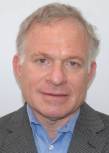 Alan
Aronoff, Vice President of Business Development, KeyASIC. Alan
Aronoff, Vice President of Business Development, KeyASIC.
Panelist
Bio: Alan Aronoff –
Vice President, Marketing and Business Development, KeyASIC. Alan
Aronoff brings more than 25 years of semiconductor and IP experience to Key
ASIC. At Key ASIC, he developed the business model and IP portfolio for Key
ASIC that has focused on consumer electronics applications. Prior to
co-founding Key ASIC in 2005, he served as Vice President and General
Manager of the Silicon Library Business Unit for Synopsys, Inc., and as
General Manager of the ASIC Business Unit for NEC Electronics, Inc. Aronoff
was a founder of the ASIC business at Mostek Corporation. He earned a
Bachelors of Science Degree in Electrical and Biomedical Engineering from
Carnegie-Mellon University and a Masters of Science degree in Electrical
Engineering from Southern Methodist University.
|
|
| |
|
 Dr.
Cyrus Afghahi, CEO, Novelics. Dr.
Cyrus Afghahi, CEO, Novelics.
Panelist
Bio: Cyrus Afghahi
co-founded Novelics in 2005 with a vision of dramatically enhancing embedded
memory performance in semiconductor design. With more than 20 years of
experience as a semiconductor industry professional, Dr. Afghahi has led
strategic technology initiatives in low-power and high-speed very
large-scale integration (VLSI) designs for advanced, high-performance
applications.
Prior to co-founding Novelics, Dr. Afghahi was technical director for the
Office of the Chief Technology Officer at Broadcom Corporation, where he was
involved in strategic special circuit and design decisions.
Before joining Broadcom, Dr. Afghahi held key technical and management
positions at Intel Corporation, Ericsson Radio and Carlsted. At Intel he was
responsible for RF circuit design and served as technical manager of
high-performance sensor chips and memories. He received his Ph.D. in
electrical engineering from University of Linkoping, Sweden. Dr. Afghahi
holds more than 60 patents and has published 20 journal and conference
articles.
|
|
| |
2:30 - 5:45 |
Innovative EDA Tools for Complex SoC Designs in 45nm and beyond.
Track Chairman: Track
Chairman: Professor Rao R. Tummala, Director of Microsystems Packaging
Research Center. Georgia Institute of Technology.
|
|
| |
2:00 - 2:30
Keynote
Synopsys |
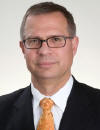 Joachim
Kunkel, VP and General Manager, Solutions Group, Synopsys. Joachim
Kunkel, VP and General Manager, Solutions Group, Synopsys.
"Automating SoC Design - Reality, Future, or Fiction?"
Abstract: Designing SoCs has often been described as an activity
based on taking building blocks - some new, many already existing - and
putting them together following a set of rules and constraints. The concept
sounds simple, compelling and, in particular, one that could be automated by
tools working at a high level of abstraction. If this is the case, how comes
we are still seeing very little automation of SoC design? This talk will
examine the current state of affairs of automating
the design of SoCs and make an attempt at predicting the future.
Bio:
Joachim Kunkel is the Vice President
and General Manager of the Solutions Group at Synopsys, Inc. In that
capacity, he manages the business units responsible for Synopsys DesignWare®
intellectual property (IP) and system-level design.
Prior to joining Synopsys in 1994, Joachim was a managing director of CADIS
GmbH, a company he had co-founded in 1989 in Aachen, Germany. CADIS GmbH
focused on the development of system level design tools for digital signal
processing and providing specialized design services for wireless
communication systems. From 1984 to 1989, Joachim was a research
assistant at the Aachen University of Technology’s ‘Lehrstuhl fuer
Elektrische Regelungstechnik’, where he conducted research in the area of
system level simulation techniques for digital signal processing, with
special emphasis on parallel computing. Joachim holds an MSEE from the
Aachen University of Technology, Aachen, Germany.
|
|
| |
2:30 - 3:00
Mentor Graphics |
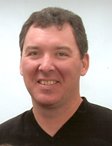
Jon McDonald - Senior Technical Marketing
Engineer, ESL and Design Creation Division,
Mentor
Graphics.
"Leveraging ESL Technologies for Low-Power
Design."
Abstract: Designs for managing and optimizing power are a key concern
for today's electronics companies, and the only way to address future power
needs is through architecture and functional-aware techniques. Electronic
System Level (ESL) design is the only domain that offers a practical
platform to address today's power design issues. This 30-minute technical
session will introduce a dynamic power management theory , functional-aware
optimization, HW/SW tradeoffs, and an approach to design for power, applying
available ESL technologies. Included, will be a couple of case-studies to
support these key points. This technical session will be of value to SoC
developers, HW and SW designers, followed by a Q/A session with the
presenter (if available).
Bio:
Jon McDonald is a senior technical marketing engineer for Mentor Graphics
ESL division. He received a BS in Electrical and Computer Engineering from
Carnegie Mellon and an MS in Computer Science from Polytechnic University.
He has been active in digital design, language based design and
architectural modeling for over 15 years. Prior to joining Mentor Graphics
Mr. McDonald held senior technical engineering positions with Summit Design,
Viewlogic Systems and HHB Systems.
|
|
| |
3:00 - 3:30
Sarnoff Europe
|
 Benjamin
Van, Director of Engineering, Sarnoff Europe, Benjamin
Van, Director of Engineering, Sarnoff Europe,
“ESD Design Challenges in
nano-CMOS SoC Design”
Abstract: IC's created in 90nm, 65nm and 45nm are typically very
complex System On Chip (SOC) designs with large production volume to offset
the multi-million dollar investment for mask costs, innovation and design.
Such SoC's combine multiple voltage domains as well as different functional
blocks. Despite the use of a complete and silicon proven ESD protection
strategy for core and IO pads, companies have repeatedly reported failures
in the (logic) core of the IC during ESD - and particularly during CDM-
testing. This presentation will elaborate on these and similar unexpected
failures and will include clarifications, focusing on the ESD damage created
at the communication lines between different functional domains in the SoC.
Through the use of IC case studies, the presentation will demonstrate the
ESD sensitivity in similar designs. A product proven protection strategy and
specific ESD solutions will be presented to the audience.
Bio: As “Director of Engineering” at Sarnoff Europe, Benjamin Van
Camp currently leads the entire engineering team at the company. He is also
responsible for the strategic development of TakeCharge®, the portfolio of
on-chip ESD design solutions – product and/or silicon proven in more than 40
processes down to 45nm. Prior to assuming his current position, Benjamin
served as director for commercial products. In this position, he was
involved in a multitude of complex and innovative ESD projects, and
collaborated with Sarnoff customers on cutting-edge innovative products.
Benjamin has (co-) authored about 10 peer-reviewed and published articles in
the field of “on-chip ESD protection and testing”, and has acted in various
workshops focusing on ESD. He was awarded his first patent in 2006, with 8
patent applications still pending. Benjamin Van Camp received his M.Sc.
degree in Electro-technical Engineering from the University of Leuven,
Belgium in 2002.
|
|
| |
3:30 - 4:00
CoFluent Design
|
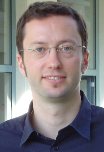 Vincent
Perrier, co-founder and director of products and marketing, CoFluent Design. Vincent
Perrier, co-founder and director of products and marketing, CoFluent Design.
"ESL
Modeling and Simulation for SoC Architecture and Performance Estimation."
Abstract: CoFluent Design introduces a new level of ESL modeling and
simulation for the architecture exploration and performance analysis of
embedded systems and SoCs, before and at HW/SW partitioning. CoFluent Studio
allows the description of a complete HW/SW system at the message level,
corresponding to an approximately timed – AT – modeling style. From simple
graphics, C code and performance/timing attributes, CoFluent Studio
generates automatically SystemC code which simulation results allow for
behavioral, real-time, architectural, and performance estimation. CoFluent
models do not necessitate embedded SW code, instruction set simulators – ISS
– or hardware IPs: they are created from behavioral and generic performance
models captured and parameterized by the user. CoFluent Design's method is
based on a ‘Y’ design flow that separates the timed-behavioral view from the
execution platform view and combines them to obtain a macroscopic
architecture model. The Y flow and drag-and-drop mapping allow for unlimited
architecture exploration breadth and depth, while performance analysis
includes monitoring of dynamic profiles of resource utilization/load, memory
footprint, power consumption and cost/Si area indices.
Bio: Vincent Perrier is CoFluent Design's co-founder and director in
charge of products and marketing. He has over fifteen years of technical,
sales and marketing experience in the embedded systems and design automation
industries.
|
|
| |
4:00 - 4:15
Afternoon
Break |
Afternoon Break |
|
| |
4:15 - 4:45
Carbon Design Systems
|
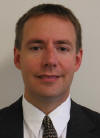 Bill
Neifert is the CTO and founder of Carbon Design Systems. Bill
Neifert is the CTO and founder of Carbon Design Systems.
"Architectural Analysis and Firmware Development for SoC Designs."
Abstract: The constant
pressure on SoC schedules is forcing designers to constantly re-evaluate
their design methodologies looking for ways to shave days, weeks and
hopefully months from their time to market. This talk will focus on helping
designers reduce their time to market in two areas: the architecture phase
where all the early design decisions are made and the software integration
phase which is increasingly more important as the software content of SoCs
rises. Architectural exploration for SoCs is one of the most crucial stages
in a system’s design but its value is often overlooked and relegated to back
of the envelope calculations. The design decisions made in the architectural
stage however can greatly shorten the amount of work required later in the
design cycle. This presentation will cover methods and applications which
will enable the architect to make more intelligent design decisions and
solve problems early in the design cycle where they have the most impact.
Software validation is one of those “no introduction is necessary” problems.
Everyone is looking for ways to accelerate their software validation. This
presentation will cover methodologies to pull the software schedule earlier
in the cycle by performing the software integration task in a presilicon
manner on cycle-accurate virtual prototypes of the system. Techniques for
accurate validation of hardware and software in a presilicon environment
will be covered.
Bio: Bill Neifert is the CTO and founder of Carbon Design Systems.
Bill has 18 years of electronics engineering experience with more than 15
years in EDA including C-Level Design and Quickturn Systems where he managed
technical resources and sales engagements for the eastern half of the United
States. Bill started his career as an ASIC design and verification engineer
at Bull. Bill has a BS and MS in Computer Engineering from Boston
University.
|
|
| |
4:45 - 5:15
NEC
|
 Dr.
Kazutoshi Wakabayashi, NEC. Dr.
Kazutoshi Wakabayashi, NEC.
"CyberWorkBench:
Integrated Design Environment Based on C based Behavior Synthesis and
Verification."
Abstract: TBD.
Bio: Dr. Kazutoshi
Wakabayashi, received his B.E. and M.E. degrees and Dr. of Engineering from
the University of Tokyo in 1984 and 1986.
He was a visiting researcher at Stanford University during 1993 and 1994. He
joined NEC Corporation in Kawasaki Japan in 1986 and he is currently a
Senior Manager of EDA R&D Center, Central Research Labs. Dr.Wakabayashi has
been engaged in the research and development of VLSI, CAD systems;
high-level and logic synthesis, formal and semi-formal verification,
system-level simulation, HDL, emulation, HLS and floorplan links, and
reconfigurable computing. He served on executive committee or organizing
committee of some international conference including: ASP-DAC'09 General
Chair, CODES+ISSS'09 Co-Technical Program Chair. A Secretary of Steering
Committee of ASP DAC, and Asian Rep. of ICCAD, Asian Rep. of DAC, Tutorial
Chair of ASP DAC 2006, He has served on the program committees for several
international conferences including: DAC, ICCAD, DATE, ASP-DAC, ISSUS,
SASIMI, and ITC-CSCC, ISCAS, VLSI-TSI, SBCCI, and so on. Also, he has served
as a general chair, a secretary, and a Technical Program Committee member
for a number of Japanese conferences, including: Institute of Electronics,
Information and Communication Engineers of Japan (IEICE), the Information
Processing Society of Japan (IPSJ), System LSI WS, Karuizawa WS. He is
currently chair of SIG on VLSI design methodology of IEICE, and elected
member of IEICE. He was an associate editor of Transactions on IEICE on VLSI
CAD, DAEM. He is a rep. of CEDA (Council for EDA) of IEEE. He is also a
member of IEEE, IPSJ, and IEICE. He received the Yamazaki-Teiichi Prize in
2004, and the IPSJ Convention Award in 1988, Sakai Kinen Special Award in
2001, and the NEC Distinguished Contribution Award in 1993 for his logic
synthesis system and in 1999 for his formal verification and in 2006 for his
High Level Synthesis. His C-based Synthesis and Verification tool suite
called "CybeWorkBench" received a Grand prize of "LSI of the Year 2003" and
"LSI of the Year 2007".
|
|
| |
5:15 - 5:45
Cadence Design Systems
|
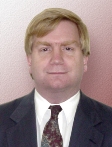 Tom
Anderson, Product Marketing Director,
Cadence Design Systems. Tom
Anderson, Product Marketing Director,
Cadence Design Systems.
"Scaling
Verification with the Open Verification Methodology (OVM)."
Abstract:
In the six months since its
introduction, the Open Verification Methodology (OVM) has moved into a
leading position for functional verification of complex chip designs. There
are a number of reasons for its dramatic rise in popularity and deployment,
including multi-vendor support, availability as open source, and several
technical advantages over legacy methodologies. This talk focuses on one
specific advantage of the OVM - its ability to scale during the verification
process. This scaling occurs from block to chip to system level, from one
project to another, and even from one company to another. The OVM also
interacts with verification components written in multiple IEEE-standard
languages, including SystemVerilog, e, and SystemC. Further, the OVM has
features and benefits of interest to logic designers as well as traditional
verification engineers writing complex testbenches. All of these aspects
will be explored in this talk, with examples of scaling taken from actual
user projects. The focus is on the methodology and its application, not on
particular vendors or vendor tools that support the OVM. This talk is
appropriate for any design or verification engineer already considering the
OVM or simply looking for a better, more scalable verification approach.
Bio: Tom Anderson is a
Product Marketing Director at Cadence, where he leads a group responsible
for all digital simulation and formal analysis products. His previous roles
include Director of Technical Marketing at Synopsys, Vice President of
Applications at 0-In, and Vice President of Engineering at Virtual Chips.
Tom holds an MS from MIT and a BS from the University of Massachusetts at
Amherst.
|
|
| |
5:45
– 6:45
Panel
|
“Technology &
Entrepreneurship: Dreams, Realities & Opportunities”
This Panel is FREE for
Everyone to Attend!
|
|
| |
UC Irvine
Toshiba
IEEE OC Chapter
Capistrano Ventures
Quanta Consulting
Power
Connections
Crowell & Moring
Savant
|
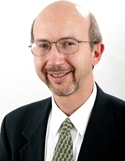
Dr. Goran Matijasevic is Director of Research
Development at The Henry Samueli School of Engineering at UC Irvine
Bio:
Goran Matijasevic is Director of Research Development at The Henry Samueli
School of Engineering at UC Irvine. In this capacity, he works on formation
of new industry-university and academic collaborations, especially focusing
on new interdisciplinary research initiatives. Prior to this, he was the
Research Coordinator of the Integrated Nanosystems Research Facility at UC
Irvine, where he worked closely with industry partners on making them aware
of available university resources. Prior to UCI, he worked as a senior
engineer at QPlus, a telecommunications start-up company. From 1994 to 2001,
he was at Ormet Technologies, where as Director of Research he was working
on development of polymer and metal materials and structures for electrical
interconnect of high density circuits, new metal alloys for use in
conductive adhesives, materials for embedded passive components and heat
sensors, and high thermal efficiency electronic substrates. ¨He managed
multiple SBIR projects that led to several industry consortia projects, as
well as a license agreement with a Fortune 100 company. He has 4 U.S.
patents, 3 book chapters, and over 40 conference and journal publications
and has served on the NEMI Industry Roadmap committee. He served as
NanoWorld Conference Technical Chair, the Electronic Components and
Technology Conference (ECTC) Interconnect Chair and Emerging Technologies
Chair, the IEEE Sensors 2006 Local Chair, the ASME Frontiers in Biomedical
Devices Co-Char, as well as on the LARTA Tech Transfer Conference Organizing
Committee. He is currently on the OCTANe (Orange County Technology Action
Network) Operations Committee and Vice Chair of OC Innovation. Goran
received his PhD from UC Irvine in Electrical and Computer Engineering and
his MBA from Pepperdine University. He is also a member of the TriTech
Advisory Board, Southern California Biomedical Council Board, Tech Coast
Venture Network, IEEE, and ASME.
“Technology &
Entrepreneurship: Dreams, Realities & Opportunities”
Moderator:
Dr. Goran Matijasevic is Director of Research Development at The Henry
Samueli School of Engineering at UC Irvine.
Panelists
1:
Christopher Harrington, Vice President Strategy & Business Development,
Chief CSR Officer, Toshiba America Information Systems.
2:
Charles
Baecker, Administrative Director, The Don Beall Center for Innovation
& Entrepreneurship, The Paul Merage School of Business.
3:
Mark Nielsen, Managing Director of Capistrano Ventures.
4:
R. Scott Feldmann, Partner. IP Attorney (hardware & Software).
5:
R Sampath,
Chair, Quanta Consulting, Inc. IEEE OC Section Chairman.
Several Opportunities to Win an iPod
shuffle During this Panel Discussion . . .
Don't Miss Out!
|
|
| |
|
 Charles
Baecker, Administrative Director, The Don Beall Center for Innovation &
Entrepreneurship, The Paul Merage School of Business. UC Irvine. Charles
Baecker, Administrative Director, The Don Beall Center for Innovation &
Entrepreneurship, The Paul Merage School of Business. UC Irvine.
Bio: 1997-
Present: TOSHIBA
2000-Present: Vice President, Strategy & Business Development, responsible
for corporate strategy, business planning, and new business development
across divisions of Toshiba America Information Systems (computer,
telecommunications, imaging, and storage businesses). Also holds position of
company spokesperson, with responsibilities related to brand management,
corporate public relations and environmental matters, as well as Chief
Corporate Social Responsibility Officer, and Chief Environmental Promotion
Officer.
1997-2000: Vice President, Business Planning, telecommunications systems
business, responsible for launching new business and forming strategic
alliances in the telecommunications sector.
1979 – 1997: AT&T
1990-1997: AT&T Business Divisions: Director responsible for new business
concepts and strategic planning across business and consumer markets. Public
relations head with responsibilities that included speechwriting and
development of testimony on government matters for top AT&T executives.
Product manager of AT&T’s first commercial electronic mail service. Worked
on national technology policy issues (A National Technology Agenda); created
strategy statement of the National Advisory Committee on Semiconductors.
Produced business plan for advanced satellite communications system.
1979-
1990: Bell Laboratories: Member of Technical Staff, Supervisor and
Department Head responsible, at different times, for system engineering of
large data networks, mathematical modeling of computer systems, and
transition of mainframe applications to distributed PC network, system
testing and overall operational planning. Held position of Intellectual
Property Adjutant for Bell Lab’s patent portfolio; patent holder.
Educational, Community and Personal
Bachelor of Science, City University of New York (dual major, Mathematic and
Physics,1970); Master of Science, City University of New York (Mathematics,
1976); Master of Arts and Science (New York University, Physics, 1978);
Master of Philosophy, New York University (Physics, 1980). Additional:
Completed Masters Program in Computer Science (New York University and Bell
Labs in-House courses); International Business Program (INSEAD, France);
Government Program (Brookings Institution, Washington, D.C.).
Member of Orange County Business Council’s Board of Directors and Executive
Committee, chairing Workforce Development Committee; Vice-Chair , Orange
County Innovation; member Advisory Committee, Chapman University Extended
Education; Chair, Beall Center Leadership Council (UCI).
Taught mathematics (City University of New York and Syracuse University);
co-author, Differential Equation Problem Solver. Former tournament chess
player (captain of Bell Labs Chess team). Married, living in Mission Viejo,
California.
|
|
| |
|
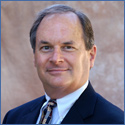 Charles
Baecker, Administrative Director, The Don Beall Center for Innovation &
Entrepreneurship, The Paul Merage School of Business. UC Irvine. Charles
Baecker, Administrative Director, The Don Beall Center for Innovation &
Entrepreneurship, The Paul Merage School of Business. UC Irvine.
Bio: TBD.
|
|
| |
|
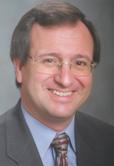 Mark
Nielsen, Managing Director of Capistrano Ventures. Mark
Nielsen, Managing Director of Capistrano Ventures.
Panelist
Mark Nielsen is a 24-year veteran of the software and wireless industries
and has run software companies for the past 19 years. He is the CEO of
Wireless21, Inc.; a consulting company focused on business development and
advisory services to a wide range of companies. Mr. Nielsen is also a
Managing Director of Capistrano Ventures, a company focused on helping
companies achieve optimal performance and liquidity events (www.capistranoventures.com).
He sits on the boards of three private companies, including being Chairman
of Corent Technology (www.corenttech.com) and ISD Corporation (www.isd-corp.com).
Mr. Nielsen most recently completed the turnaround of a private software
company serving the justice community as interim CEO. In three years, he
increased revenues threefold, returned the company to profitability and
reduced liabilities by over $2 million. Previously, he has been CEO of both
private and public software companies, raising over $25 million in capital.
One of his companies was named by Deloitte as a “Fast 50” in Orange County.
Mr. Nielsen has been involved in numerous mergers & acquisitions, both as
the acquirer and as the acquiree. He has also served on the board or
advisory boards of a number of companies focused on various wireless,
network management, software and Internet-based opportunities. Mr.
Nielsen also serves on the San Juan Capistrano City Council, where he was
elected in November, 2006. In his capacity on the Council, he also serves as
Mayor Pro Tem, Chairman of the City’s Redevelopment Agency and Chairman of
the Open Space Committee. A native of Chicago, Mr. Nielsen received a
Bachelor's degree in Communications Studies and Philosophy from Northwestern
University. He has served on the Executive Advisory Council of the
International Engineering Consortium as well as on the National Board of
Directors of the AeA (formerly the American Electronics Association), and is
the past Chairman of AeA's Orange County Council. Mr. Nielsen also serves on
the Board and Executive Committee of Opera Pacific, the South Coast Medical
Center Foundation Board and is a lifetime member of the San Juan Capistrano
Historical Society. He has lectured worldwide at trade shows, as well as
various business and investor conferences. Mr. Nielsen is also active in the
Southern California investment community as a Tech Coast Angel, a member of
Ventana Capital’s Executive Advisory Board, and a founding partner of
Venture Farm where he sits on the Deal Review Committee. He resides in San
Juan Capistrano, CA with his wife and two children.
|
|
| |
|
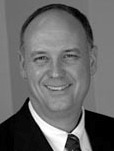 R.
Scott Feldmann, Partner. IP Attorney (hardware & Software), Crowell &
Moring. R.
Scott Feldmann, Partner. IP Attorney (hardware & Software), Crowell &
Moring.
Panelist
M. Scott Feldmann's practice is devoted to intellectual property, especially
applied within the context of content, software, computers and the Internet.
He has litigated cases involving rights to Digital Signal Processing
communications chips, RISC chips, MPEG technology and complex software
programs. He has successfully obtained temporary restraining orders in both
federal and state court on matters involving copyright infringement,
misappropriation of trade secrets, trademark infringement, trade libel,
breach of fiduciary duty and unfair competition. He has tried patent,
trademark, right of publicity and commercial dispute cases. Mr.
Feldmann was previously a management consultant with A.T. Kearney, Inc.,
advising Fortune 500 companies on strategic investments. Mr.
Feldmann was also a Captain in the U.S. Air Force, where he was a test
director of "Top Secret-Eyes Only" electronic warfare and "Star Wars"
programs. He was awarded the Commendation Medal, and Achievement Medal with
oak leaf cluster.
|
|
| |
6:45
– 7:45 |
(TBA) |
|
| |
|
|
|
| |
98% of attendees at the Savant
Company Inc. International
SoC Conference and Exhibit said they would recommend this SoC Conference to
someone else!
Please See Client Testimonials
International System-on-Chip (SoC) Conferences
Technical Advisory Board
*
* * * * * *
Platinum Sponsors
Gold Sponsors
Technology & Media Sponsors
* * * * * * *
Attendee demographics
for past SoC Conferences (based on job responsibilities):
-
74% Design Engineers and
Engineering Management
-
11% Technical Marketing,
Sales, or Business Development Management
-
8% University Engineering
Professors and Engineering Students
-
4% Strategic Planning,
Media, Analysts
-
3% Other
* * * * * * *
Back To The Main SoC
Conference Page
* * * * * * *
* * * * * * * * * * * * * * * * * * * * * * * * *
Copyright © 2003 - 2010 by Savant Company Inc. All worldwide rights reserved.
|
|
| |
|